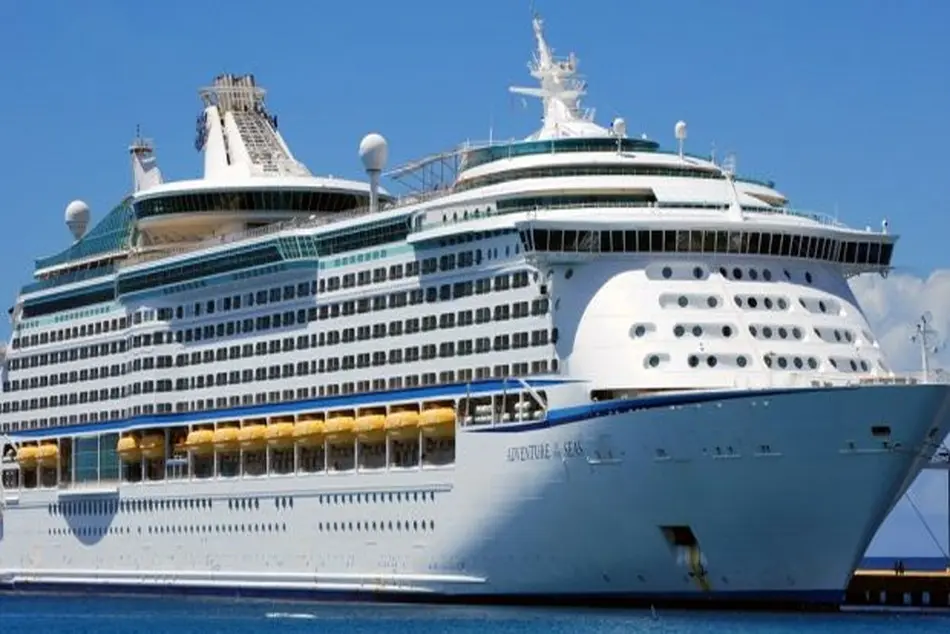Research Vessel Discovery and "The Night of Monster Waves"
On the night of February 8, 2000, the crew of the British research vessel, Royal Research Ship (RRS) Discovery, were braced for a storm.

On the night of February 8, 2000, the crew of the British research vessel, Royal Research Ship (RRS) Discovery, were braced for a storm.
Wind speeds had been increasing over the previous night creating conditions no one onboard had ex-perienced before – or would want to experience again.
From mid-afternoon on the 8th to mid-morning on the 9th, wave heights were topping 20 m in height and even reached 29.1 m – the equivalent to a ten-storey building – peaking around midnight.
Even for 250 km west of Scotland, out in the North Atlantic, these were abnormal conditions.
The storm left its mark on the vessel, 25 scientists and 22 marine crew, who were conducting the Ellett Line hydrographic transect. There was a shattered interior window, broken by the ship’s structure flexing under the immense forces it was under. A lifeboat came loose, and people were thrown from their bunks, suffering bruises and even broken ribs.
Were it not for the efforts and actions of the captain and marine crew, it could have been worse (and only later did they learn that they had also come very close to a collision with a trawler, avoided only by the crew’s vigilance).
But the storm also left its mark on science. The wave heights recorded turned out to be the largest waves ever recorded by scientific instruments in the open ocean.
For ocean science, this is important.
Significant wave heights are important to know and understand. But, for obvious reasons, they are also rarely measured in situ – and are difficult to accurately predict.
Onboard the RRS Discovery on that dark night was NOC Chief Scientific Officer, Professor Penny Holliday. At the time, Penny working on her PhD at the University of Liverpool while also working at NOC in Southampton.
“It’s hard to believe it’s been 25 years since that night,” she says. “It was pretty horrendous. The waves were unlike anything I’d ever encountered.
“We would climb up the face of one wave, then have to slow the engine to prevent it overheating as the propellors came out of the water while cresting the wave, before racing down into the next trough, hoping we’d not keep going down.
“No one aboard the Discovery slept that night. Most of us were unceremoniously thrown from our bunks. Everything that wasn’t nailed down was flying around as the ship was tossed like a toy in the maelstrom, reaching a peak around midnight.”
At the time, conventional wisdom held that waves of this magnitude were rare anomalies, so-called “rogue waves”.
“But the data we collected that night suggested that these immense waves were not freak occurrences,” says Professor Holliday. “They were part of a storm system that had generated waves regularly exceeding 18 m high.
“We found evidence that this was driven a resonance effect, where two unusual days of consistent westerly winds had matched the speed of the waves, helping to drive them into higher and higher peaks.”
The research stemming from that night, published in Geophysical Research Letters, shed light on the resonance phenomenon.
Due to the storm’s high wind speeds matching the speed of the waves, energy was continually added in the system.
“It’s a bit like pushing a swing at just the right moment—each push adds more height,” says Professor Holliday. “In this case, the ‘push’ came from the relentless winds feeding energy into the ocean, driv-ing wave heights to unprecedented levels.”
This insight has had implications for marine engineering. Ships and offshore platforms are typically designed to withstand waves of up to 15 m.
The experience – and data – from the RRS Discovery on February 8, 25 years ago, forced a rethink of these assumptions, particularly in regions like Rockall, where extreme conditions may be more common than previously thought.
That data also remains among the most detailed direct measurements of extreme waves ever recorded.
Today, engineers and scientists use advanced models—including those informed by our work—to better predict and prepare for such events. However, as that night proved, even the best models can underestimate the sheer power of the ocean.
“Twenty-five years on, the ocean continues to surprise and challenge us,” says Professor Holliday. “As we face a future shaped by climate change, understanding extreme weather and ocean events becomes even more critical. Rising sea temperatures and changing wind patterns could lead to more frequent and intense storms, making our work to predict and mitigate their impacts all the more urgent.”
*The RRS Discovery on that expedition, the predecessor to today’s RRS Discovery, had been built in 1962, refitted in 1992 and retired in 2012. The ship was replaced by the current RRS Discovery in 2013.